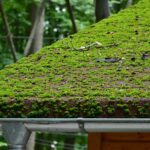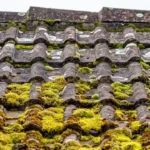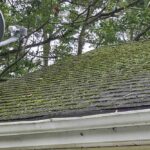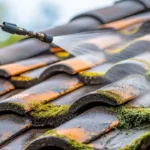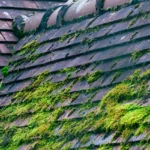Introduction
Delving into the world of roof painting might seem daunting for beginners. However, armed with the right roof painting tips for beginners, this task can transform the look of your home and significantly improve its curb appeal. This comprehensive guide is tailored to assist homeowners like you in understanding and executing a roof painting project seamlessly.

Why Paint Your Roof?
Understanding the importance of a well-maintained roof is crucial. It serves not only as a protective shelter but also plays a significant role in the overall aesthetics of a home. Painting a roof can enhance its durability, protect it from harsh weather conditions, and extend its lifespan.
Moreover, a freshly painted roof can increase your home’s value. It’s also a cost-effective way to refresh your home compared to replacing the roof entirely. Whether you’re looking to sell or simply want a change, a newly painted roof can make a real difference.
Essential Preparation Steps
1. Carry Out a Thorough Inspection
Before you start painting, it’s essential to inspect your roof. Look for any damages that need repair. It’s easier to fix these issues beforehand than after the painting process has begun. For further guidance on spotting damages, you might find this DIY tips helpful.
2. Clean Your Roof Properly
Cleaning your roof is a critical step in the preparation process. Removing dirt, moss, and other debris ensures that the paint adheres well to the surface. For a thorough cleaning method, visit our guide on cleaning roof shingles.
3. Choosing the Right Paint and Tools
Select a paint that’s specifically designed for roofs. These paints are formulated to withstand the elements. Additionally, you’ll need specific tools such as rollers, brushes, and safety gear to ensure a professional finish.
The Painting Process
4. Start with a Primer
Priming your roof is a crucial step. It provides a base for the paint to adhere to and ensures longevity. Apply the primer evenly and let it dry completely before proceeding to the next step.
5. Painting the Roof
Using the right technique is essential for an even coat. Apply the paint in thin, even layers, and allow adequate drying time between coats. Depending on your roofs size and the type of paint, you might need multiple coats.
6. Safety Precautions
Your safety is paramount. Ensure you’re wearing appropriate safety gear, and consider using a harness if you’re working on a steep roof. Never compromise on safety for the sake of speed.
Maintenance after Painting
7. Regular Inspections
After painting, it’s essential to carry out regular inspections to ensure the paint holds up well. This preventative measure can save you money and time in the future.
8. Weather Considerations
Weather can have a significant impact on your roof’s paint. In regions with extreme weather conditions, more frequent touch-ups might be necessary. Consider reviewing this external guide from the NRCA on maintaining your roof in different climates.
9. Professional Help
If you’re unsure about any step or face complex issues during the painting process, it’s advisable to seek professional advice or assistance. Sometimes, investing in a professional can make a significant difference in the results.

FAQs
Can I paint my roof myself?
Yes, with the right preparation and tools, you can paint your roof yourself. However, if you feel unsure or the roof requires significant repairs, hiring a professional might be the best option.
How often should I repaint my roof?
This depends on the paint type and the environmental conditions. Generally, a quality roof paint should last between 5 to 10 years. Regular inspections will help determine when it’s time for a touch-up.
What should I do if I notice peeling paint?
Peeling paint is a sign of improper application or severe weather impact. Scrape off the peeling sections, sand the area, and repaint it, ensuring you follow the correct steps this time.
This article contains affiliate links. We may earn a commission at no extra cost to you.




